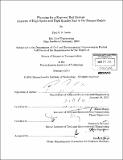| dc.contributor.advisor | Mikel Murga and Frederick Salvucci. | en_US |
| dc.contributor.author | Lewis, Paul R. S. (Paul Robinson S.) | en_US |
| dc.contributor.other | Massachusetts Institute of Technology. Dept. of Civil and Environmental Engineering. | en_US |
| dc.coverage.spatial | e-sp--- | en_US |
| dc.date.accessioned | 2011-06-20T15:53:43Z | |
| dc.date.available | 2011-06-20T15:53:43Z | |
| dc.date.copyright | 2011 | en_US |
| dc.date.issued | 2011 | en_US |
| dc.identifier.uri | http://hdl.handle.net/1721.1/64574 | |
| dc.description | Thesis (S.M. in Transportation)--Massachusetts Institute of Technology, Dept. of Civil and Environmental Engineering, 2011. | en_US |
| dc.description | Cataloged from PDF version of thesis. | en_US |
| dc.description | Includes bibliographical references (p. 184-188). | en_US |
| dc.description.abstract | The goal of this thesis is to provide guidance for regional rail network planning to achieve the maximum benefits in terms of economic growth, passenger satisfaction, and environmental sustainability. The hypothesis is that a regional intercity rail network can increase accessibility allowing the connected cities to function as a single economy thus increasing overall productivity. The Basque Y high speed rail (HSR) project in northern Spain will be used as a case study for this thesis. This new system has the potential to significantly reduce regional travel times but due to poor station placement and inadequate operational foresight, speed-focused planning has left key regional markets inaccessible. This thesis recommends a shift in planning that enables regional economic cohesion and increased system ridership through a focus on high quality rail (HSR) that includes the complete door-to-door journey with a customer oriented approach to convenience, comfort, and reliability. The highly successful Swiss rail network serves as a guide as to how to combine the superior speed of the Spanish system with the superior quality of the Swiss system to provide one which can achieve maximum benefit from the Basque Y investment. A comparison with the Spanish system shows what the Basque Y should do differently in terms of planning and service and accessibility maps help to illustrate the Basque Y system under different planning scenarios. Planning issues examined are station location, integration with local transit systems, and operational fares, frequencies, and scheduling. Finally the regional system is examined politically and a strategy is sketched that can enable the region to modify the plan to obtain the benefits of a high speed and high quality regional rail system. | en_US |
| dc.description.statementofresponsibility | by Paul R. S. Lewis. | en_US |
| dc.format.extent | 188 p. | en_US |
| dc.language.iso | eng | en_US |
| dc.publisher | Massachusetts Institute of Technology | en_US |
| dc.rights | M.I.T. theses are protected by
copyright. They may be viewed from this source for any purpose, but
reproduction or distribution in any format is prohibited without written
permission. See provided URL for inquiries about permission. | en_US |
| dc.rights.uri | http://dspace.mit.edu/handle/1721.1/7582 | en_US |
| dc.subject | Civil and Environmental Engineering. | en_US |
| dc.title | Planning for a regional rail system : analysis of high speed and high quality rail in the Basque region | en_US |
| dc.title.alternative | Analysis of high speed and high quality rail in the Basque region | en_US |
| dc.type | Thesis | en_US |
| dc.description.degree | S.M.in Transportation | en_US |
| dc.contributor.department | Massachusetts Institute of Technology. Department of Civil and Environmental Engineering | |
| dc.identifier.oclc | 727033311 | en_US |
